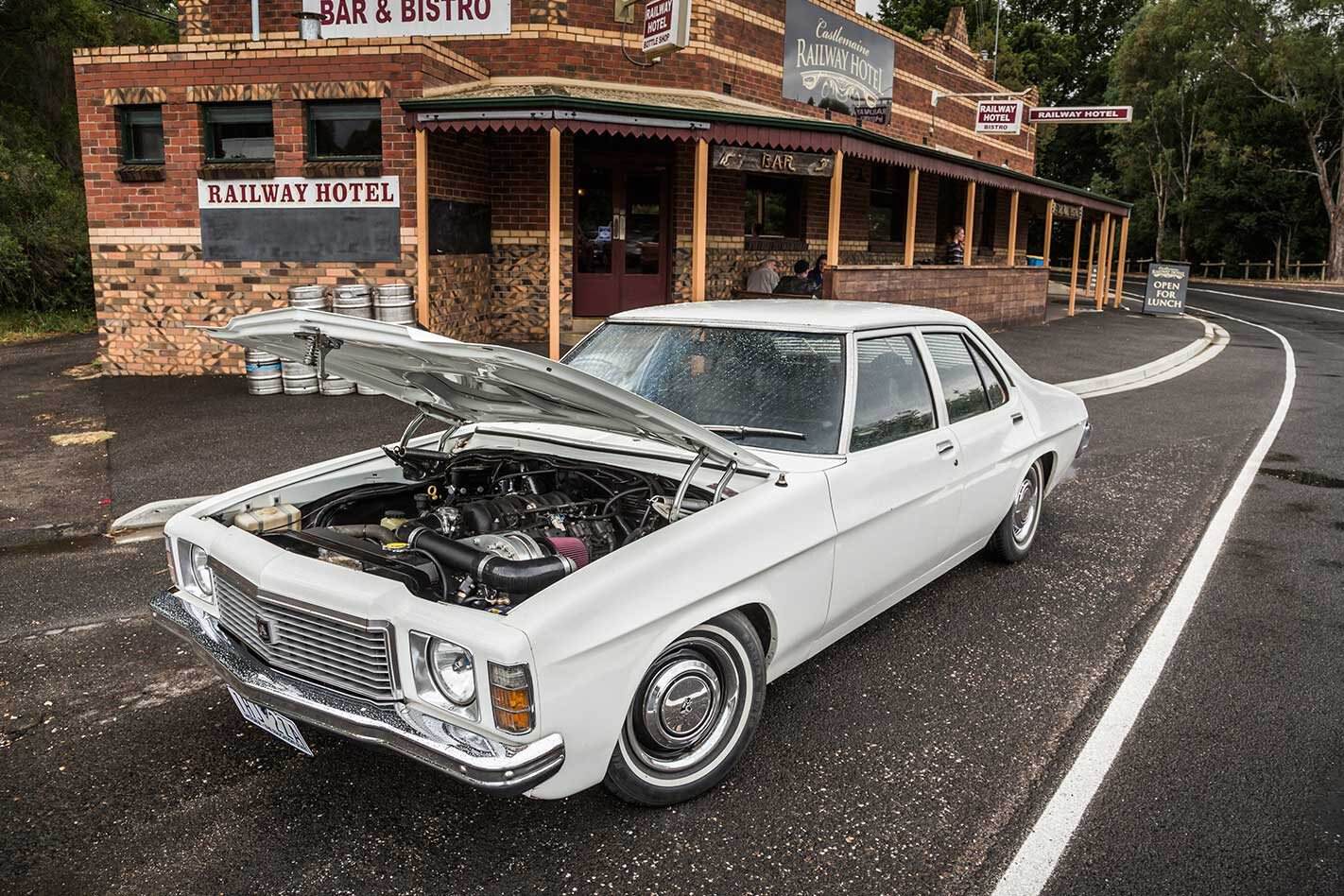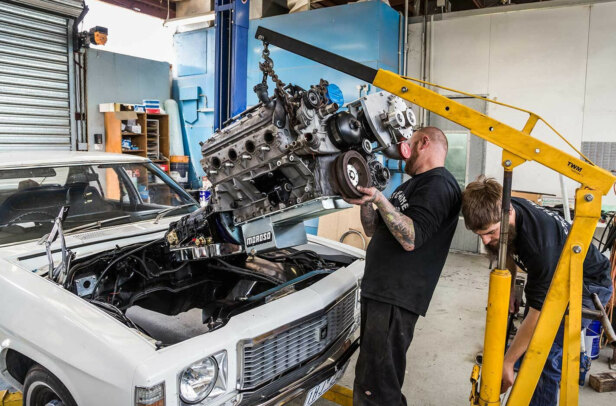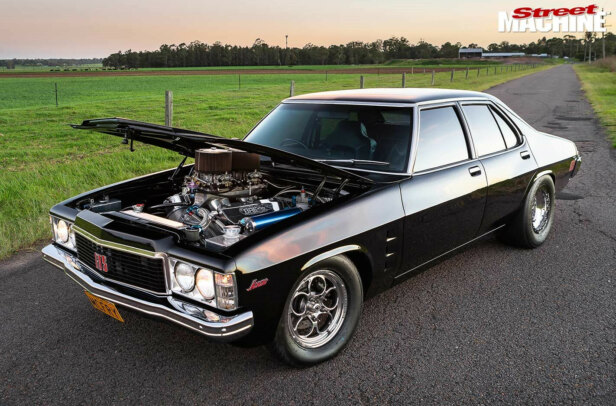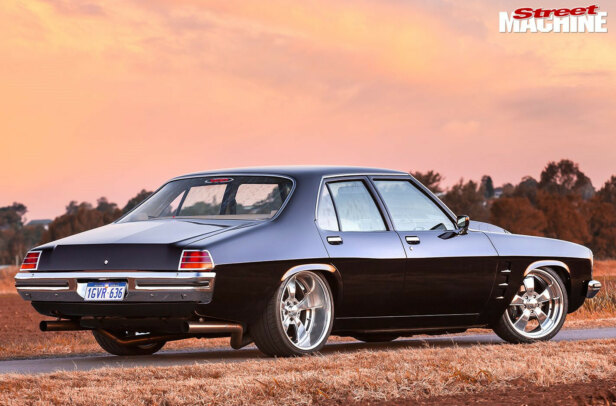This article on Castlemaine Rod Shop’s HJ Kingswood sleeper was originally published in the August 2018 issue of Street Machine magazine
TO GET the full rundown on what went into this HJ, check out the tech article in our August issue – there’s a lot more to this car that what you see here, that’s for sure! Basically, this is one of the many development cars that Castlemaine Rod Shop keeps on hand to make sure that any kits the company designs fit and work as intended.
Ideally, the Rod Shop guys like to start with the most unmolested car they can find, but, since people have been hotting up and modifying these cars for more than 40 years, that’s not always that straightforward.
Heath Waddington at the Rod Shop gives us a bit of history on this HJ: “As you see the car – the paint, interior, the carpet – is exactly how we got it. Everything we had, to an extent, we chucked into it: the diff, the suspension, just all the stuff to show guys what goes into it. It just sits in our showroom, and every time someone comes in wanting an HQ-WB LS kit, we can just go: ‘Here’s one sitting here.’ We find if you’ve got the engine just sitting on a stand, it’s not as nice as seeing it in a car. We even put it up on the hoist if people want to have a bit of a bo-peep. There’s nothing to hide that way.”
It not only looks good, but it stops, steers and goes around corners a lot better than the standard fare. Remember, Radial Tuned Suspension didn’t come out until the HZ
To really appreciate what’s gone into this car, you need to put it up on a hoist, because apart from a slightly lower stance, this thing really does look bog-stock from the outside – right down to the stock-width wheels and cheese-cutter tyres. Look beyond that, though, and you’ll see an HJ with a suspension system way ahead of what GM-H were offering back in 1974.
Up front are tubular A-arms and rack-and-pinion steering combined with Viking double-adjustable coil-over shocks. The rear also has tubular control arms and a set of coil-overs, but the old Salisbury diff has got the flick in favour of a Rod Shop nine-inch. All four corners wear 280mm (11-inch) Wilwood cross-drilled, slotted and ventilated discs with four-spot calipers, and while you can go bigger (much bigger, in fact; up to 355mm with the rotors) CRS wanted to keep the stock 14-inch rims for the full sleeper effect.
It’s all neat and tidy under the bonnet, but remember, this is a development mule. If you wanted to spend a bit more time, you could easily hide the wiring, relocate the coil packs, chuck the battery in the boot and have a super-sano engine bay
One major advantage with the suspension set-up is that you can get the in-the-weeds stance without compromising comfort and handling. “With the stock suspension lowered this much you wouldn’t be able to keep it on the road; it would be jumping around,” Heath explains. That’s the advantage of doing the coil-overs all ’round; you can adjust the ride height to where you want it. Because it’s got the standard stub axles but the design of the suspension arm effectively lowers it two inches, you still get full travel on the coil-over.
Taking a little peek underneath, the 9in looks right at home and fits with the stock tank. Those Wilwood disc brakes and four-piston calipers are pretty flash too
In regard to the car’s straight-line performance, it’s never been tested on the track, but with 460rwhp thanks to the TorqStorm centrifugal blower kit, you could consider it ample. “With the 14s and the pizza-cutters on it, you can be doing 60 or 80 kays and spin the tyres right off it,” Heath says. “If you put a decent tyre under it and adjust the coil-overs, it would definitely be a 12-second car. We just put a pretty basic Eagle Spares Turbo 400 in it. It doesn’t even have a high-stall in it; it’s really a cruiser.”
Nothing to give the game away here! This is one Q-ship that should pass muster with the Sleeper Police
It’s an upgrade that you could do in the shed at home, as everything just bolts in. “Everything has already been engineered,” Heath explains. “You just need to get it checked by an engineer to make sure the installation has been done correctly, and you’re off and going.”




Comments